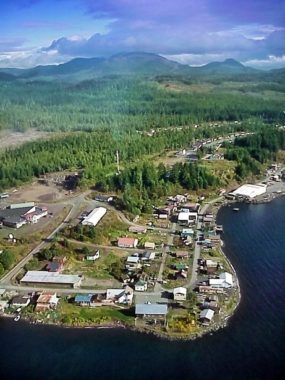A Southeast Alaska tribal government hopes to leverage a federal law to secure the return of human remains and burial objects removed from a remote cave more than 50 years ago.

The Organized Village of Kake seeks to bring back a mummified infant and other items taken in 1961 from a cave on Entrance Island near Hobart Bay, about 70 miles south of Juneau.
“Any items we can get back to the community we’re welcoming back, whether it be human remains or artifacts,” Frank Hughes said.
The identities of the people who took the culturally significant items — now in museums and private collections — are unknown.
The Native American Graves Protection and Repatriation Act, or NAGPRA, requires publishing a notice in the federal register of the intent to return the items.
If no one else comes forward to object, the remains and burial items can be repatriated. The law also provides funding to identify items and return them to Alaska Native tribes and other indigenous peoples.
The infant, 6-9 months in age, was buried inside a painted bentwood box.
The remains have been at the Alaska State Libraries, Archives and Museum since 1961 and the museum doesn’t know their age, but they could date back to first contact with people from outside the area.
Another four burial items from Entrance Island resurfaced just last year, when an unnamed individual from California approached the U.S. Forest Service in 2017 with the intent on returning them.
The Organized Village of Kake also is working to recover other items too.
A shaman’s jawbone was taken sometime before 1910 and now at a museum in St. Joseph, Missouri.
Other artifacts have been found in Portland, Oregon and at George Fox University in Newberg, Oregon.
Hughes notes that Tlingit protocol on who is allowed to handle remains and artifacts is even stricter than federal law.
He said non-burial artifacts could eventually be put on display in Kake, if they are successfully returned.
“We always look forward to bringing them back,” said Hughes. the NAGPRA coordinator for Organized Village of Kake.
Hughes said the tribal government’s intention is to bury these items, just as they were.
“That’s again where the healing begins, when we could actually re-inter the body to where it came from and then put closure to it,” Hughes said. “Ceremonies would be done, songs would sang and again we’d walk away like we did any other time as proud people.”
While Hughes thinks it best to return the infant body to its original burial site, he said that will ultimately depend on the recommendation of Kake’s repatriation committee in consultation with the involved clan.
Repatriating human remains and culturally sensitive artifacts is a process that can take time.
The Entrance Island site is located on what is now national forest land.
“The Forest Service actually got notified that there were objects that a person had collected who now lived in California that he wanted to send back to Alaska,” said Theresa Thibault, heritage program manager for U.S. Forest Service. “You get guilty after a while. He wanted it to end up back in Alaska and he contacted the museum. And then the museum of course recognized that it probably came from forest land so they they contact the Forest Service. And then we initiate the whole tribal consultation process.”
Forest Service determines what tribes had traditional claim to the territory when repatriations take place.
Entrance Island site is within the traditional territory of the Kake people despite being a long way from the current day location of Kake, a community of about 600 people in central Southeast Alaska.
This kind removal of items from burial sites was pretty common before NAGPRA, Thibault said.
“There was a time when it wasn’t OK to collect human remains but it sort of was,” she said. “And so people did it. And they get to a point where I don’t know they have a change of heart, or they’re getting old and they realize that was really dumb and they send them back. Museums get that kinda thing all the time too.”
“They came into the museum long before I was around but there’s no record of them ever being on display,” said Steve Henrikson, the curator of collections at the Alaska State Archives, and Museum. “They were taken in and put into storage,” he added.
It was common for people to give collected artifacts to the museum, Henrikson said.
“I think that the museum has been around for over a hundred years, long before many of the federal agencies had developed capacity for law enforcement or archaeology and so there wasn’t a clear process for people who found artifacts or remains out in the field and wanted to do something with them,” he said. “Of course, the approach that we should take now is not to disturb anything like that but to report it to the agency that owns the land.”
Henrikson said the tribe is in the driver’s seat now, in terms of when and how the items are returned.
“We’re really happy that this is taking place and we’re awaiting instructions from the tribe on how to finalize this.”
